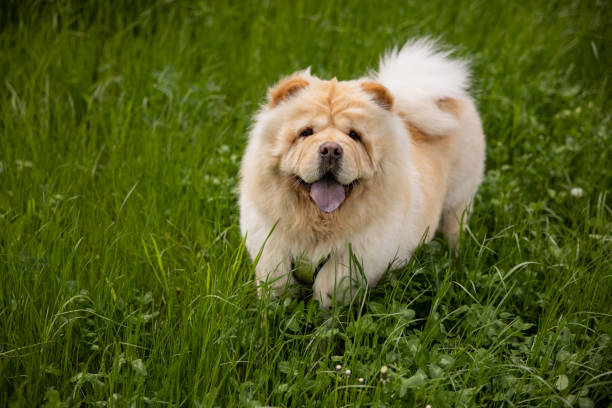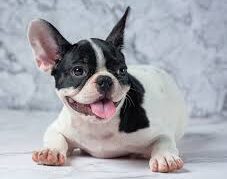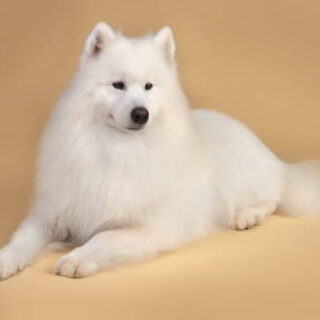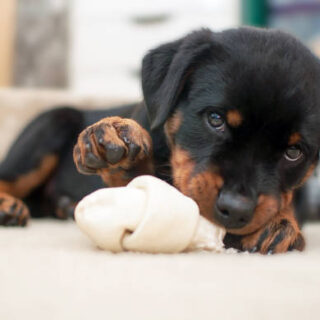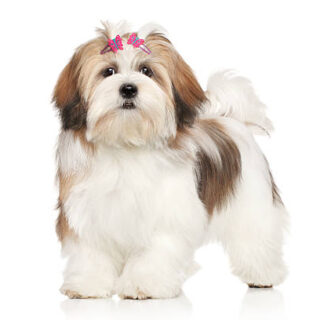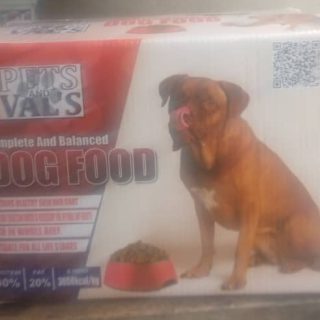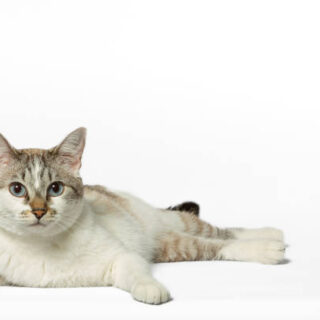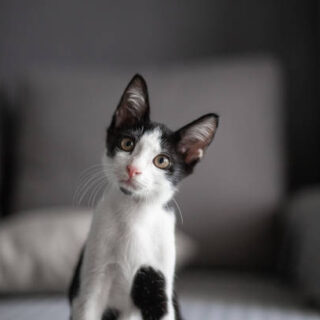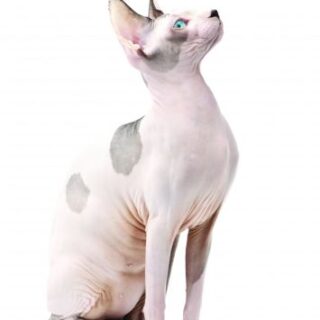Chow Chow Dog Breed
Chow Chow dog breed are included in the medium to large dog breeds and are Chinese in origin. They are considered a non-sporting breed today but were used for hunting purposes a couple of thousand years ago. Chow Chow dogs have a sturdy build and their appearance resembles a lion. They have thick furry all across their body and the fur is particularly thick around their neck and face. All this fur around their face and neck gives it a mane-like appearance. Its tail is thick and also has feathery fur on it. Today, these furry canines are tamed as domestic pets only. They have a short snout, and their eyes look heavy-lidded because of the fur around them. If you notice closely, their eyes have a distinctive almond-like shape and their nose is either brown or black.
This unique and fascinating dog is of Chinese origin and is steeped in oriental mystery. Chow Chows have retained their individuality and distinctive appearance since 150 BC and early records show it was used by the Emperors as guard dogs and hunters. The Chow Chow as we know it first appeared in England in 1781, but they did not gain prominence until a century later. Perhaps the most distinctive feature of this medium-sized dog is its blue-black tongue a feature it shares with the bear.
Key specifications of Chow Chow Dog Breed
-
Weight
– A healthy Chow Chow weighs between 20-32 kg.
-
Height
– An adult Chow should stand anywhere between 17-20 inches tall.
-
Lifespan
– A Chow Chows average lifespan is 8-12 years.
-
Coat
– Chow Chows have a short double coat.
Chow Chows Behavioural traits
- Chow Chows can be left alone at home and they will handle the separation better than a lot of other breeds.
- You need to be cautious when you have a Chows Chow and children in the same room because it may not adapt well to the fun and frolic kids have.
- Chow Chows characteristics also include loyalty to the family members that adapted them.
- One of Chow Chows most noted personality traits is that they are not hyperactive and rather remain calm and quiet.
- They only bark rarely when the need arises.
Physical appearance
Chow Chows can be easily identified simply based on their appearance. No other dog breed has such a thickly furry neck and face. Its face is broad and atop its head sit triangular ears. Its face and the expressions they give are bear-like. What sets this dog breed apart is their blue tongue. Yes, their tongue is blue. These dogs are born with pink tongues but they turn blue when Chow Chows become 810 weeks old. A Chow Chows coat mainly comes in five common colours –
- Black
- Blue
- Cinnamon
- Cream
- Red
A Chow Chows coat displays no distinct markings. But their coats can come in two textures, namely rough and smooth. The rough coat is thick and feels like wool whereas the smooth coat is denser and shorter. Their walk might seem a little stiff but their stride is not lazy. They also can remain alone when their owners are off to work but they do not like being left outside.
If you want to adopt a purebred Chow Chow or want to know how to identify one, here are some of its classic characteristics –
- A purebred Chow Chows tongue will always be bluish-black
- ts hind legs are almost straight, making its walk look a bit stiff
- Their coat emits a light smell which does not mean they smell bad; they just have a slightly distinct smell.
Behaviour and Temperament
Chow Chows will not bark unnecessarily. If you are looking to adopt a dog you could cuddle and snuggle up against, then Chow Chow is not for you. These dogs like to be in their own space and because of these qualities, Chow Chows are often compared to cats. Their detached nature makes many people assume that they are arrogant and aggressive. But they are quite stubborn and will immediately voice their discomfort or dislikes. They will mix better with other pets if you raise them as puppies in their company. They do get along well with children too but a household with older children would be more suitable for Chow Chows.
Care requirements for Chow Chow Dog
Heres some more information on Chow Chows that you should know if you are thinking of adopting one:
-
Health
Overall, a Chow Chow lives a healthy life but it is prone to develop a few illnesses and diseases like all dog breeds do. It can develop diseases like eyelid entropion wherein the eyelid turns inward. They are also prone to developing elbow and hip dysplasia which are hereditary. Chow Chows may also experience gastric dilatation and volvulus commonly known as GDV or bloating. In this condition, the dogs stomach fills with air and it cuts off the circulation of blood and this sends the dog into a state of shock. Treating bloating with high treatments can also prove to be fatal. Because of their thick costs, Chow Chows are also prone to heat strokes. Therefore, make sure you keep your dog in an air-conditioned room in the summers and also keep brushing its coat to ensure air circulation to its skin.
-
Grooming
Both rough and smooth types of coats on Chow Chows need to be groomed regularly. Brushing their coats multiple times a week ensures that the fur remains healthy and shiny. The Chow Chow dog breed shed heavily in the spring and autumn season. Apart from these two seasons, they shed minimal fur throughout the year and its regular brushing will prevent extra fur from falling all around the house. Regularly brushing your Chow Chows teeth will ensure oral hygiene as well. Trimming their nails is also very important.
-
Exercise
Chow Chows are not hyperactive and therefore do not need heavy exercising. A walk for 15 minutes every day will suffice for Chow Chows. You will have to make sure that the sun is not too harsh when you decide to take your dog for a walk. On hot days, it is advisable to make them exercise at home.
-
Nutrition
A Chow Chow can be fed 1 to 1.5 cups of dog food twice a day. The quantity of the food you feed your dog wholly depends on its activity levels and age. You need to discuss this with the vet who will be able to layout the proper dietary chart for your Chow Chow dog. Table scraps should be avoided at all costs and so is a high-fat food. You also need to keep a bowl of fresh water in an accessible range of your Chow Chow.
-
Training
Consistency is the key when it comes to training a Chow Chow dog. These dogs are prideful and positive reinforcement is the way to go with them. They need an assertive trainer who will teach them proper ways to socialise and discipline. If a Chow Chow is not properly trained, it may behave in an unruly manner.
History of Chow Chow Dogs
The Chow Chow dog breed is considered to be one of the worlds oldest breeds.
A Chow Chows origin is traced back to China and dates back to 206 B.C. In Asia, these dogs were used as guards of the temples. Today, this dog breed finds its name in the non-sporting category but 2000 years ago, they were used for hunting purposes.
Well, how this breed got the name Chow Chow is an interesting story. The English merchants brought shipments of unknown cargo in the 1700s and they called it chow chow. These dogs were at times a part of the cargo and that is how the name stuck. Queen Victoria also helped in popularizing the breed and in 1895, a breed club was formed in England.

